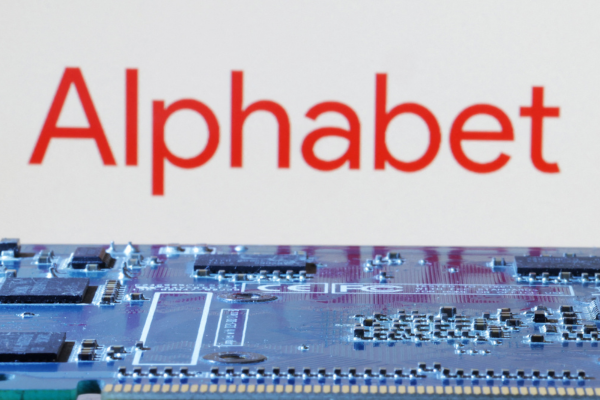Making Tax Digital: preparing for MTD Corporation Tax

Russell Gammon at Tax Systems describes how to use technology to synergise VAT and CT reporting
Now that businesses have completed the 3-year compliance transition to HMRC’s Making Tax Digital (MTD) for VAT, accounting teams are turning their attention to the MTD for CT. For the first time ever, there’s a need to synergise the workings of VAT and CT teams.
While HMRC has stated that MTD for CT will not be mandated before April 2026, smart tax departments have realised the need to invest in technology for benefits that go beyond compliance and add value to their business.
Those companies that aren’t yet out of the starting blocks will need to consider what tax technology tools they might use to meet the new digital requirements, how this will impact the way they work and even how they might change the skills sets required within their tax practices.
New rules - new challenges
As part of a new Government agenda to digitalise taxation processes, the initiative for Corporation Tax comes with its own set of rules for the approach and regulations that organisations regardless of size, type or industry must meet. This includes keeping digital records of income and expenditure, providing quarterly updates to HMRC using MTD compatible software, and filing their annual tax return using MTD compatible software.
Digitisation hasn’t moved quickly in the CT world until more recently. The last major change was in 2009/10, when iXBRL (Inline eXtensible Business Reporting Language) was introduced for the submission of statutory accounts. Given the lack of progress, many companies still rely on manual processes to extract, transform and load data into tax compliance software.
This is some way from the new regulations, where digital links must connect the final return to source data, enabling the basing of in-year risk assessments and interventions on more regular reporting.
With autonomous reporting timescales and teams, there has historically been no need for VAT and CT reporting processes to be linked. CT filing currently takes place twelve months after the end of the accounting year, while VAT is quarterly or monthly, with reporting occurring 30 business days after.
MTD for CT requires CT quarterly submissions and VAT returns to be submitted as little as 5 days apart, meaning there is a new need for corporates to synergise their VAT and CT tax reporting processes for the first time. This introduces complexity for tax teams and implications for using technology to support the process.
There is much to consider for businesses to take advantage of what they already have – their data – to ensure a smooth running, intelligent, accurate and cost effective process.
Data is at the heart of MTD for CT
Perhaps only the largest enterprises have experienced overlap in VAT and CT processes to date. While VAT uses near-term data, CT largely uses data that has already been checked and finalised. But with the introduction of MTD for CT, on top of the existing annual return all businesses will need to submit key accounting data-points on a quarterly basis.
With the aim to keep a more accurate business run rate, and base tax accounts on regular actual figures rather than one set of annual figures, HMRC are more likely to pick up on large variances between the two submissions.
Implications for an integrated tax approach
With many companies not being data mature, and being unable to leverage their data across multiple tax streams, it will be an adjustment to these new processes. Their CT and VAT tax teams currently work separately, with different tax experts, and don’t have a need to talk to each other.
Each function has its own separate data source, with granular transactions for VAT, unlike the more top-level summary Trial Balances for CT for instance. Information is pulled at different times and there’s typically no shared view of data, even when it relates to the same company. But with the arrival of MTD for CT the two processes will need to be processed in tandem.
This means it will no longer be appropriate to have tax data dealt with twice (or more) within the CT and VAT processes separately. Beyond the need for greater adoption of technology to handle both processes, it may even create new roles within the tax team, such as data managers or even a tax data expert. Businesses will need to consider how technology investments might change their tax reporting models.
The impact of tech on the tax system
Previous conversations about insourcing or outsourcing tax compliance may also have to be revisited to consider another option – co-sourcing. Currently in the UK, the majority – 85% of CT returns are outsourced to agents for calculation and filing, with the number of outsourced VAT filings being much lower.
It’s likely that more corporates could potentially bring MTD for CT in-house than at present, to align both tax streams as it may be difficult to outsource one element without the other.
However new technology may cause other business models such as co-sourcing to be considered in the lead up to MTD to CT, as they can enable an organisation and their outsourcing agent to work seamlessly together.
With tax function budgets typically staying the same or getting cut, and further burdens of ESG and other agendas being placed on them, tech can play a big time-saving role for tax teams. To move forwards into the new integrated future of tax, businesses will need to take a holistic view across both VAT and CT areas and create a single source of truth for all tax data. This will ensure confidence in the team’s data and seamless processes across all tax and accounting functions.
Thinking beyond compliance
Those organisations that haven’t already invested in their strategy, business model and technology to support the transition to MTD for CT should begin to evaluate processes and get ahead of the game.
In focusing on their data as the starting point and using it in the most effective way possible, businesses will be ideally positioned to synergise VAT and CT. This will build a strong foundation not only for compliance but also to create operational efficiencies and having a clearer understanding of their financials to make meaningful business decisions.
Russell Gammon is Chief Solutions Officer at Tax Systems
Main image courtesy of iStockPhoto.com

Business Reporter Team
Most Viewed
23-29 Hendon Lane, London, N3 1RT
23-29 Hendon Lane, London, N3 1RT
020 8349 4363
© 2024, Lyonsdown Limited. Business Reporter® is a registered trademark of Lyonsdown Ltd. VAT registration number: 830519543
Join the Business Reporter community today and get access to all our newsletters, and our full library of talk show episodes
Join the Business Reporter community today and get access to all our newsletters, and our full library of talk show episodes





